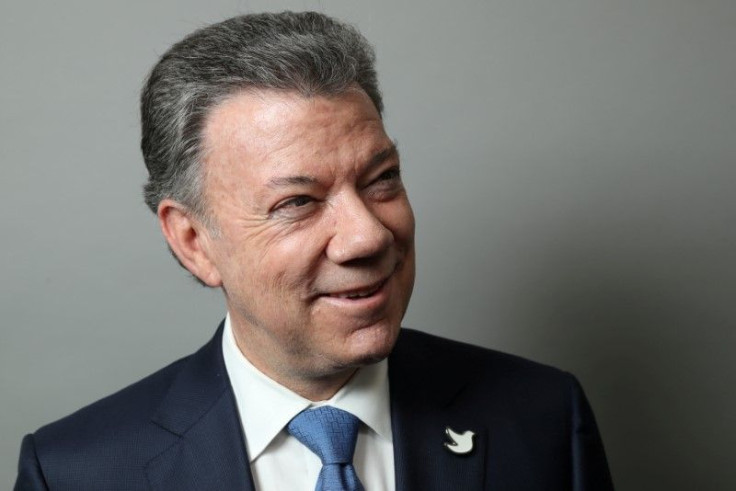Why Is Colombia At War? The FARC Peace Deal Explained After Juan Manuel Santos Wins Nobel Peace Prize

The Colombian people may have rejected a deal to end a half-century long civil war, but President Juan Manuel Santos has nonetheless been awarded the Nobel Peace Prize for striking the landmark agreement. In announcing the honor in Norway Friday, the Nobel committee praised Santos’ efforts for reaching an accord with rebel group the Revolutionary Armed Forces of Colombia (FARC).
Despite signing the deal last month, it failed to be put into effect after being narrowly rejected in a referendum Sunday. Yet, while the committee still paid tribute to Santos, FARC leader Rodrigo Londoño, known as Timochenko, was not part of the award.
“The Norwegian Nobel Committee has decided to award the Nobel Peace Prize for 2016 to Colombian President Juan Manuel Santos for his resolute efforts to bring the country's more than 50-year-long civil war to an end,” said committee chairwoman Kaci Kullmann Five. “The fact that a majority of the voters said no to the peace accord does not necessarily mean that the peace process is dead. The referendum was not a vote for or against peace.”
The conflict, which has lasted 52 years, has cost the lives of more than 220,000 Colombians and led to the displacement of an estimated 6 million people.
Who are the FARC?
The FARC were founded in 1964 as the armed wing of the Communist Party after the Colombian military attacked a rural communist enclave known as the “Marquetalia Republic.” The majority of their fighters are from poor, rural communities. They have also faced consistent criticism for the use of child soldiers.
What were they fighting for?
FARC has sought improved conditions for those living in the countryside and control over the land.
What were their methods?
Initially limited to confrontations with Colombian security forces in rural areas, FARC began conducting attacks on police stations and military posts as well as blowing up oil pipelines and bridges.
How are they financed?
To finance themselves, the group has also conducted kidnappings. At its height, it was responsible for eight abductions a day. Aside from kidnappings, FARC has also trafficked cocaine since the 1980s. Besides producing and distributing the drug, FARC taxed cocaine produced in areas under its control.
How many members do they have?
At its peak in 2002, FARC was reported to have close to 20,000 members as well as controlling a third of the country. However, their numbers have declined substantially in recent years, down to an estimated 8,000 today.
A history of peace agreements:
The current peace deal is not the first time FARC has participated in negotiations to end the fighting. In 1999, peace talks began under then-President Andres Pastrana but ended in failure after three years amid mistrust from both sides and a series of attacks by FARC guerillas. Both Pastrana and his successor Álvaro Uribe, who led a continued assault on FARC during his eight years in office, were prominent voices in calling for the current peace deal to be rejected and renegotiated.
© Copyright IBTimes 2024. All rights reserved.





















